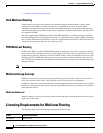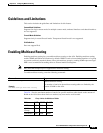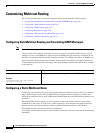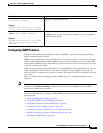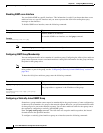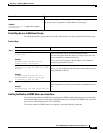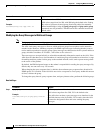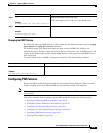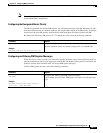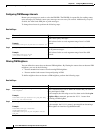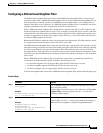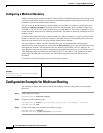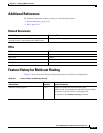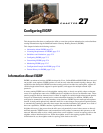
26-10
Cisco ASA 5500 Series Configuration Guide using the CLI
Chapter 26 Configuring Multicast Routing
Customizing Multicast Routing
Enabling and Disabling PIM on an Interface
You can enable or disable PIM on specific interfaces. To enable or disable PIM on an interface, perform
the following steps:
Detailed Steps
Note Only the no pim command appears in the interface configuration.
Configuring a Static Rendezvous Point Address
All routers within a common PIM sparse mode or bidir domain require knowledge of the PIM RP
address. The address is statically configured using the pim rp-address command.
Note The ASA does not support Auto-RP or PIM BSR. You must use the pim rp-address command to specify
the RP address.
You can configure the ASA to serve as RP to more than one group. The group range specified in the
access list determines the PIM RP group mapping. If an access list is not specified, then the RP for the
group is applied to the entire multicast group range (224.0.0.0/4).
To configure the address of the PIM PR, enter the following command:
Command Purpose
Step 1
pim
Example:
hostname(config-if)# pim
Enables or reenables PIM on a specific interface.
Step 2
no pim
Example:
hostname(config-if)# no pim
Disables PIM on a specific interface.
Command Purpose
pim rp-address ip_address [acl] [bidir]
Example:
hostname(config)# pim rp-address
10.86.75.23 [acl1] [bidir]
Enables or reenables PIM on a specific interface.
The ip_address argument is the unicast IP address of the router assigned to
be a PIM RP.
The acl argument is the name or number of a standard access list that
defines with which multicast groups the RP should be used. Do not use a
host ACL with this command.
Excluding the bidir keyword causes the groups to operate in PIM sparse
mode.



